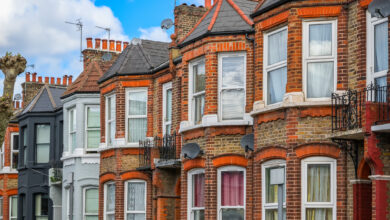Property Investment
Unlocking the Hidden Value in Your Buy-to-Let Property

Industry regulatory changes, decreases to mortgage interest tax relief as well as the stamp duty surcharge on second homes have pushed up costs for landlords in recent years, driving many to consider leaving the sector. However, there are still ways that landlords are making money from their buy-to-let properties, new research confirms.
The study looked at the role refurbishment plays in the buy-to-let market, exploring the current state of the market and the opportunity that refurbishment can provide landlords with portfolios of all sizes.
According to the Office for National Statistics (ONS), the quality of accommodation in the private rented sector (PRS) drastically improved in the last decade. Its recent figures revealed that the proportion of homes in the PRS in England deemed non-decent by the ONS has fallen for ten consecutive years, decreasing to 24.5 per cent from 44 per cent in 2008.
UK Landlords’ commitment to refurbish and improve their properties has been a key factor in this rise in good quality homes.
A survey of more than 700 property investors, conducted by Savanta for InterBay Commercial, a specialist commercial mortgage lender, part of specialist lending group OneSavings Bank, shows 70 per cent of landlords who recently undertook a refurbishment did so to improve the property, be it its presentation or the quality of the accommodation for tenants. Meanwhile, 45 per cent of landlords cited increasing a property’s capital or yield as their reasons to refurbish.
“Refurbishment is a win-win for tenants and landlords.”
The analysis shows that landlords typically spend £12,000 per refurbishment (based on the median average). This figure varies considerably depending on the type of refurbishment. Typical spending per ‘heavy’ refurbishment (substantial works such as conversion, extensions that often require planning permission) on average amounted to £40,000, compared to just £7,000 on a ‘light’ refurbishment such as modernisation or redecoration.
The research found that many landlords take a “little and often” approach to refurbishments, seeking to ensure they maintain rental income and the quality of the property, while a minority seek more significant and costly works to add value or convert a property. Indeed, just 18 per cent of those who had recently refurbished a property had undertaken a heavy refurbishment, and of these, nearly two-thirds undertook the works to add value to the property. Overall, 28 per cent of landlords spent less than £5,000 on their last refurbishment, and 43 per cent spent less than £10,000. At the other end of the scale, 13 per cent spent more than £100,000 on their refurbishment.
Unlocking value: the financial benefits of refurbishment
As well as ensuring a property is in a good enough condition to rent, refurbishment typically bolsters a rental property’s value and income potential. 74 per cent of those who undertook a refurbishment said it enhanced the property’s value, and 82 per cent saw monthly rents rise. The average rent for a refurbished property increased by £81 per month, up eight per cent on the rent achievable prior to the refurb. Even after accounting for those who did not see the value of their property’s rent rise, the typical refurbishment added £13,000 to a house’s value, meaning landlords more than make their money back on the capital gains alone. For those that saw the value of their home rise, often those undertaking larger-scale development, the increase was substantial. These landlords estimated refurbishment boosted the value of their property by 9 per cent, adding around £20,000.
The larger the renovation, the larger the average increase in value too. While a light refurbishment costing £7,000 typically added around £9,000 to the value of the property, a heavy refurbishment, involving a £40,000 average spend, added £96,000 to a property’s value.
Darrell Walker, Head of Sales, InterBay Commercial, commented: “It may be an easy target for political point-scoring, but the private rented sector has been a success story since the financial crisis, catering for a growing proportion of the population that either cannot or chooses not to purchase a home. As the PRS has grown, it has also professionalised. As it has done so, the standard of accommodation for tenants has improved drastically too.
“Refurbishment has been central to this improvement. It is a win-win for tenants and landlords. Tenants see better quality accommodation, while landlords improve the rent they receive and maximise the value of the property. And with interest rates still bumping along the bottom, those borrowing to support refurbishment can access historically cheap funding to enable improvement works.
“Nonetheless, continued investment in the sector is not a foregone conclusion, and it must be supported rather than undermined. Landlords have been buffeted by the headwinds of policy change since 2015, and costs have risen for investors. Should this rate of change continue, it will weigh on landlords’ decisions to spend more on their portfolios, and risks undermining a decade of progress.”











